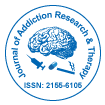当社グループは 3,000 以上の世界的なカンファレンスシリーズ 米国、ヨーロッパ、世界中で毎年イベントが開催されます。 1,000 のより科学的な学会からの支援を受けたアジア および 700 以上の オープン アクセスを発行ジャーナルには 50,000 人以上の著名人が掲載されており、科学者が編集委員として名高い
。オープンアクセスジャーナルはより多くの読者と引用を獲得
700 ジャーナル と 15,000,000 人の読者 各ジャーナルは 25,000 人以上の読者を獲得
インデックス付き
- CAS ソース インデックス (CASSI)
- 索引コペルニクス
- Google スカラー
- シェルパ・ロミオ
- Jゲートを開く
- Genamics JournalSeek
- アカデミックキー
- ジャーナル目次
- セーフティライト付き
- 中国国家知識基盤 (CNKI)
- 電子ジャーナルライブラリ
- レフシーク
- ハムダード大学
- エブスコ アリゾナ州
- OCLC-WorldCat
- SWBオンラインカタログ
- 仮想生物学図書館 (vifabio)
- パブロン
- ジュネーブ医学教育研究財団
- ユーロパブ
- ICMJE
役立つリンク
オープンアクセスジャーナル
このページをシェアする
抽象的な
A Review of Magnetic Resonance Spectroscopy Studies in Marijuana using Adolescents and Adults
Yasmin Mashhoon and Marisa M Silveri
Marijuana (MJ) remains the most widely used illicit drug of abuse, and accordingly, is associated with adverse effects on mental and physical health, and neurocognitive decline. Studies investigating the neurobiology of underlying MJ effects have demonstrated structural and functional alterations in brain areas that contain moderate to high concentrations of cannabinoid (CB1) receptors and that are implicated in MJ-related cognitive decrements. Proton magnetic resonance spectroscopy (1H MRS), a non-invasive imaging technique used to assess neurochemistry, has been widely applied to probe a variety of substance-abusing populations. To date, however, there is a relative paucity of MRS published studies characterizing changes in neurometabolite concentrations in MJ users. Thus, the current review provides a summary of data from the eight existing MRS studies of MJ use in adolescents and adults, as well as interpretations and implications of study findings. Future MRS studies that address additional factors such as sex differences, onset and duration of use, abstinence and age, are warranted, and would lead to a more thorough characterization of potential neurochemical correlates of chronic MJ use, which would fill critical gaps in the existing literature.

 English
English  Spanish
Spanish  Chinese
Chinese  Russian
Russian  German
German  French
French  Portuguese
Portuguese  Hindi
Hindi